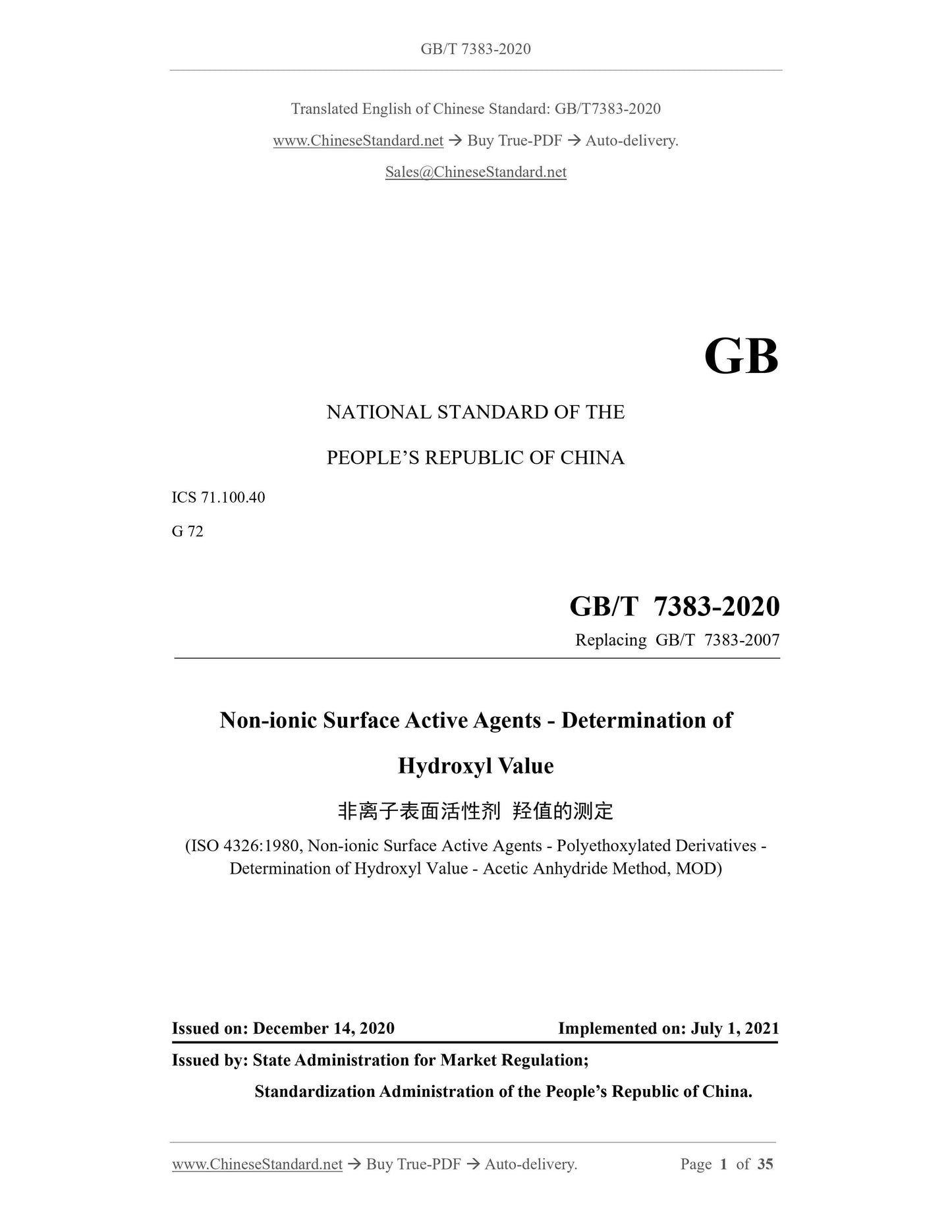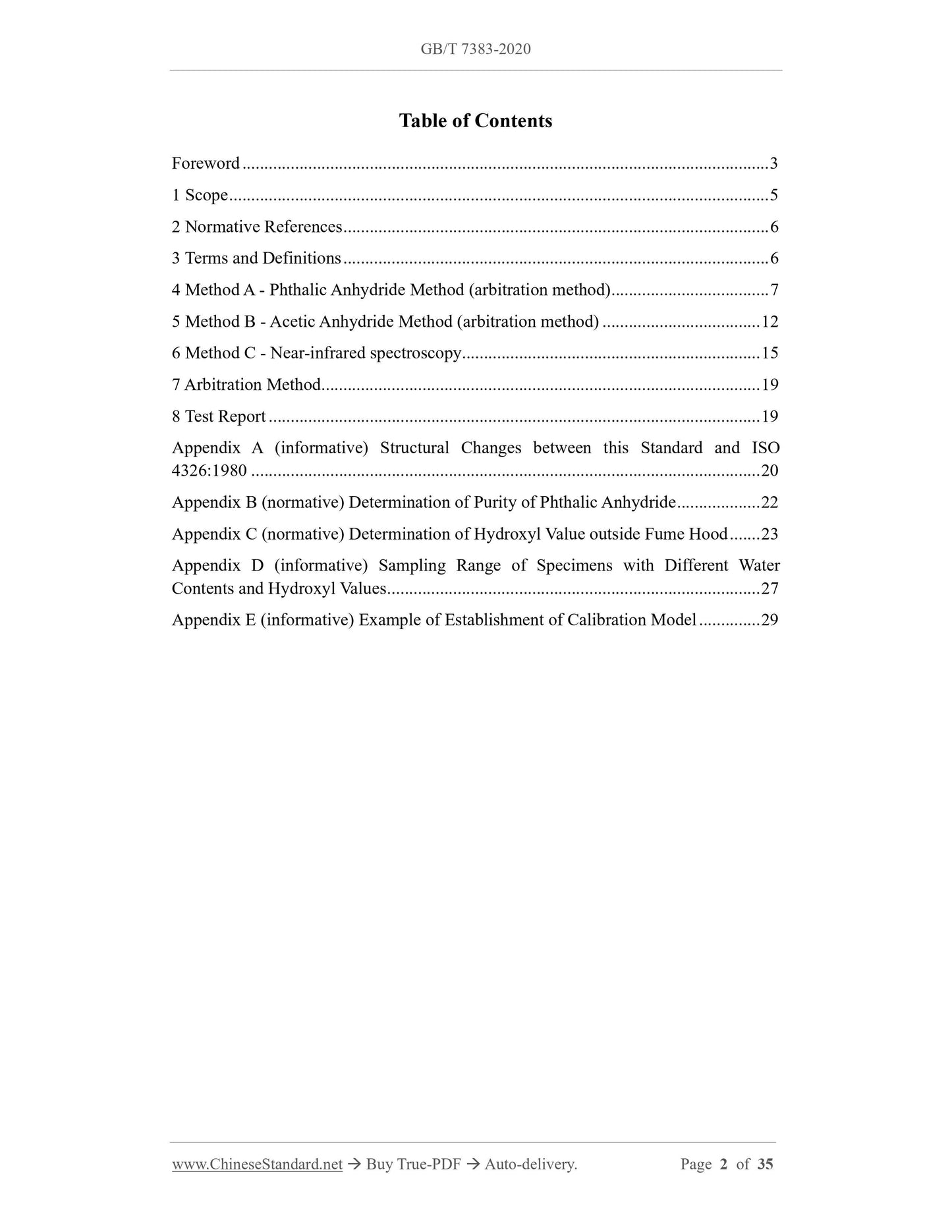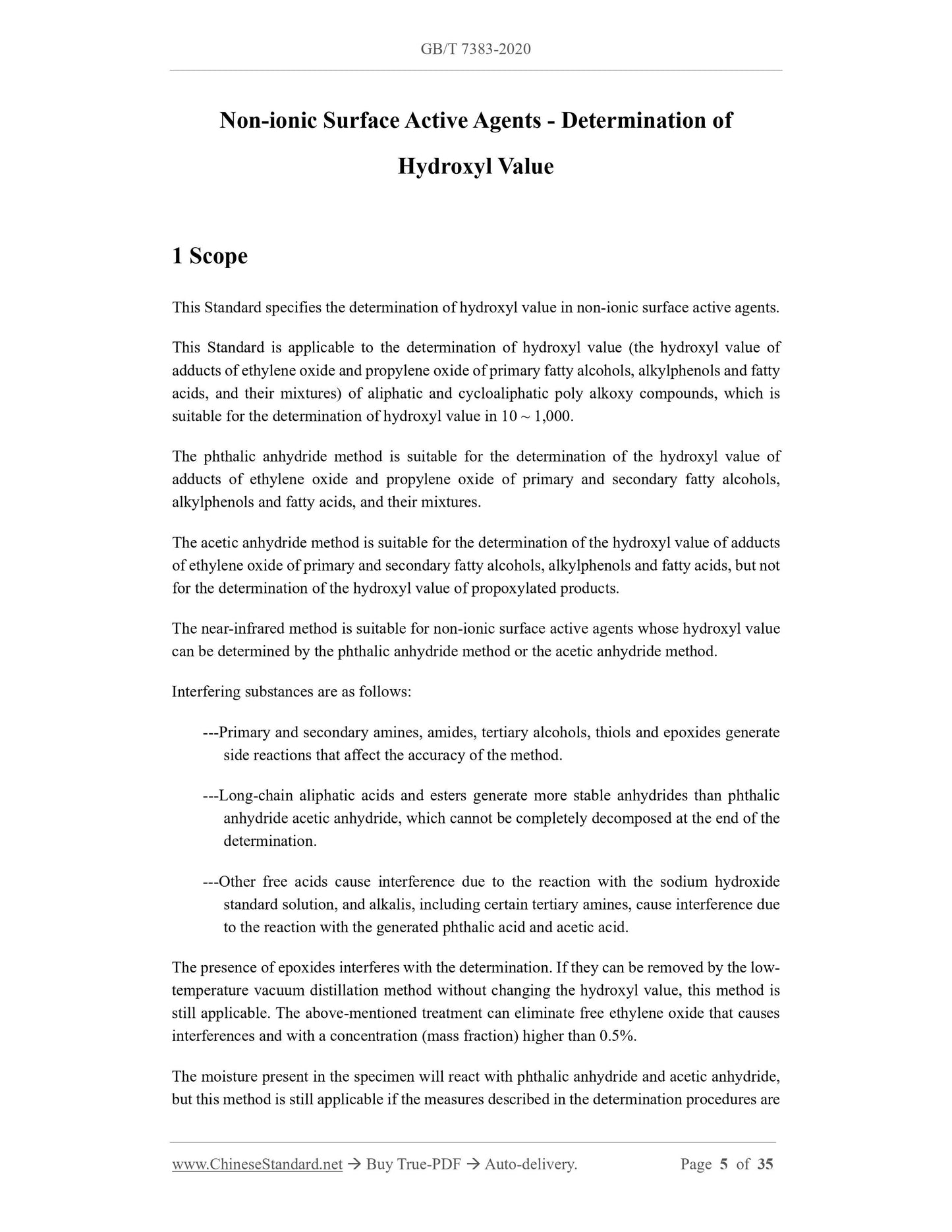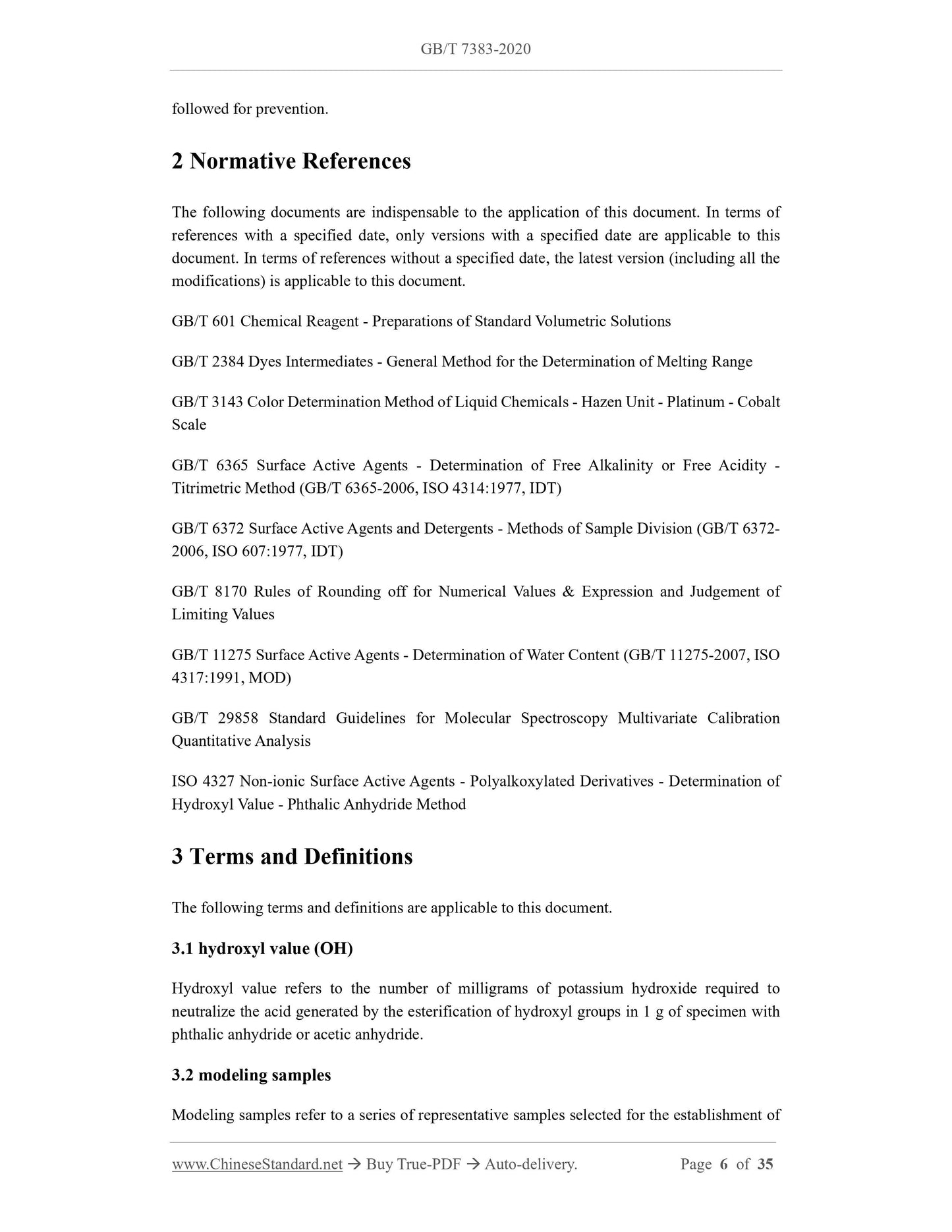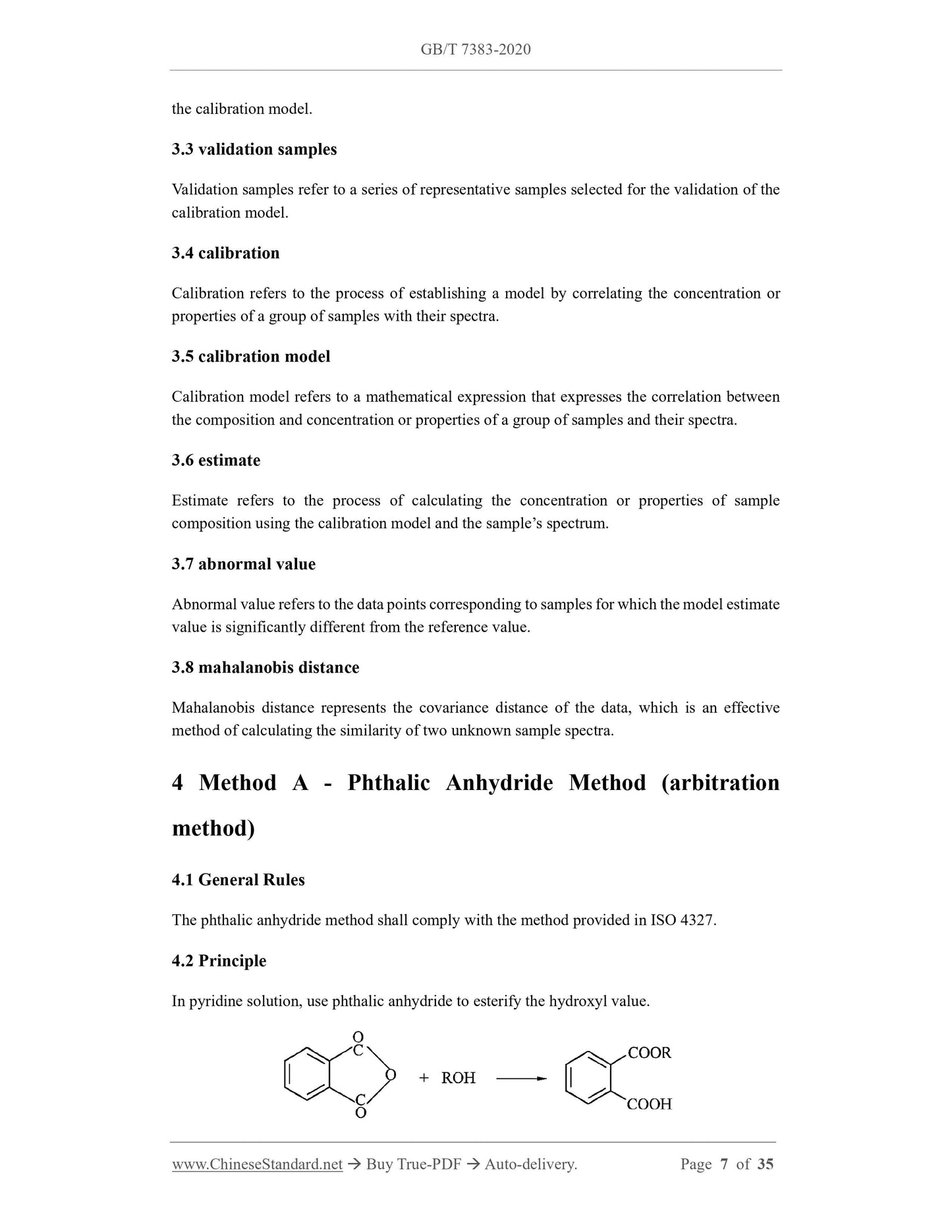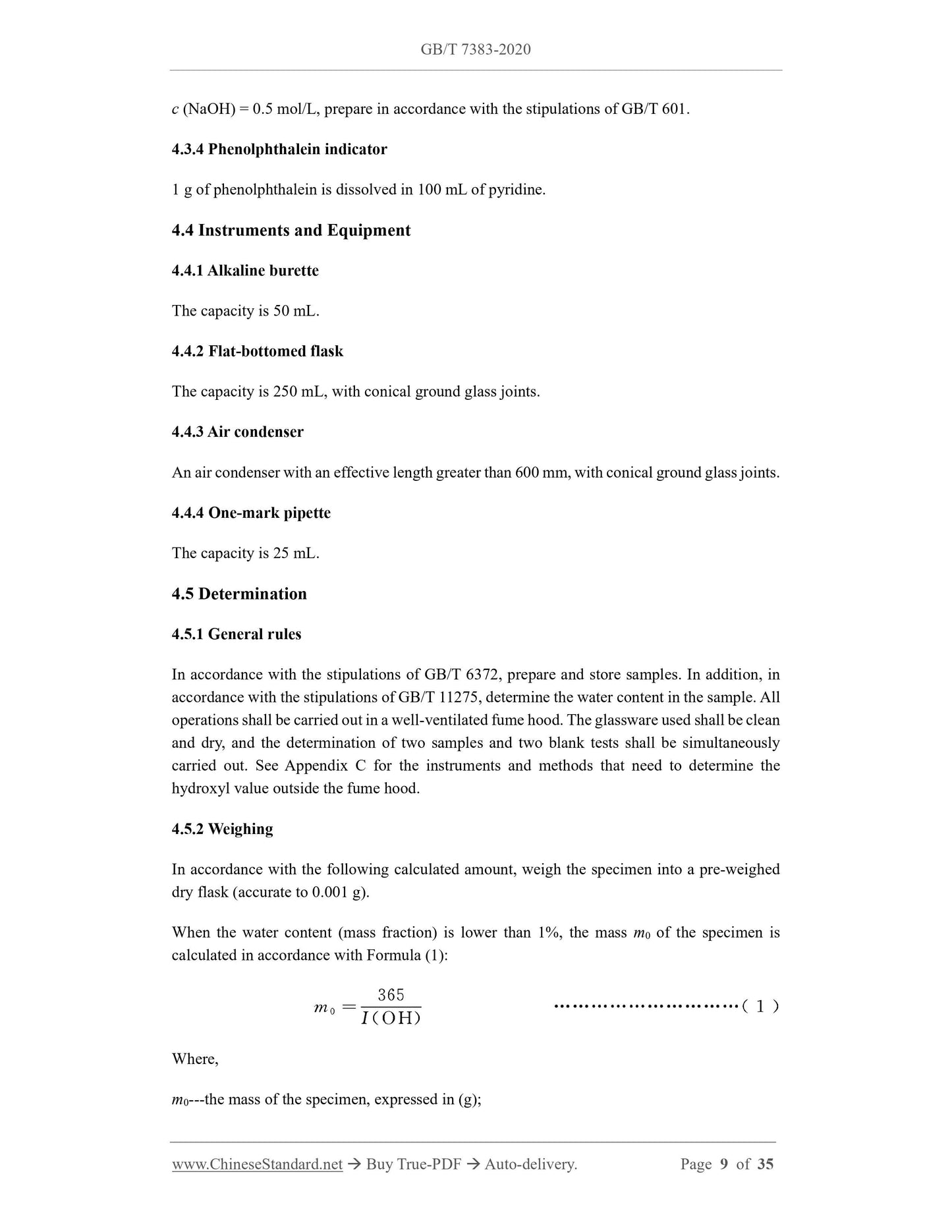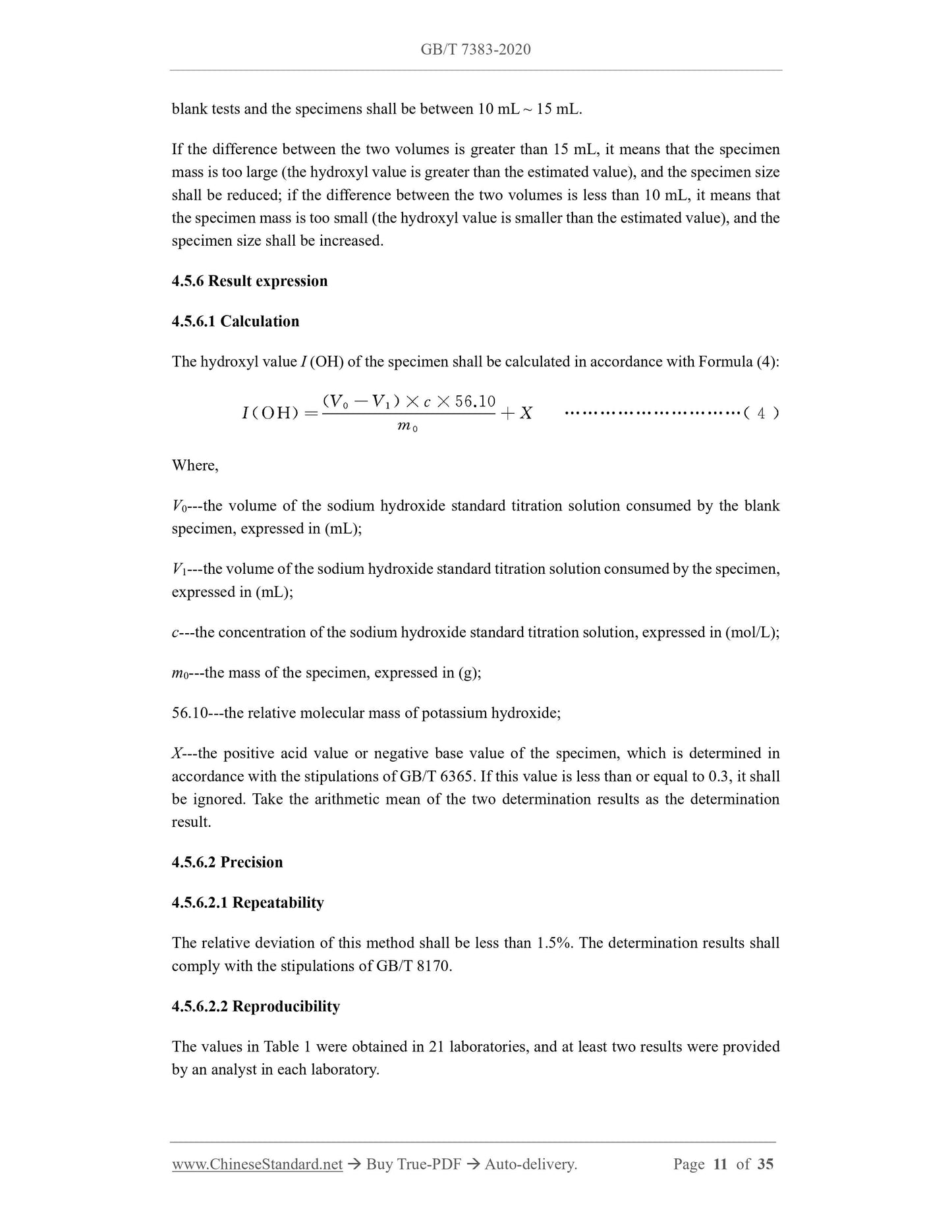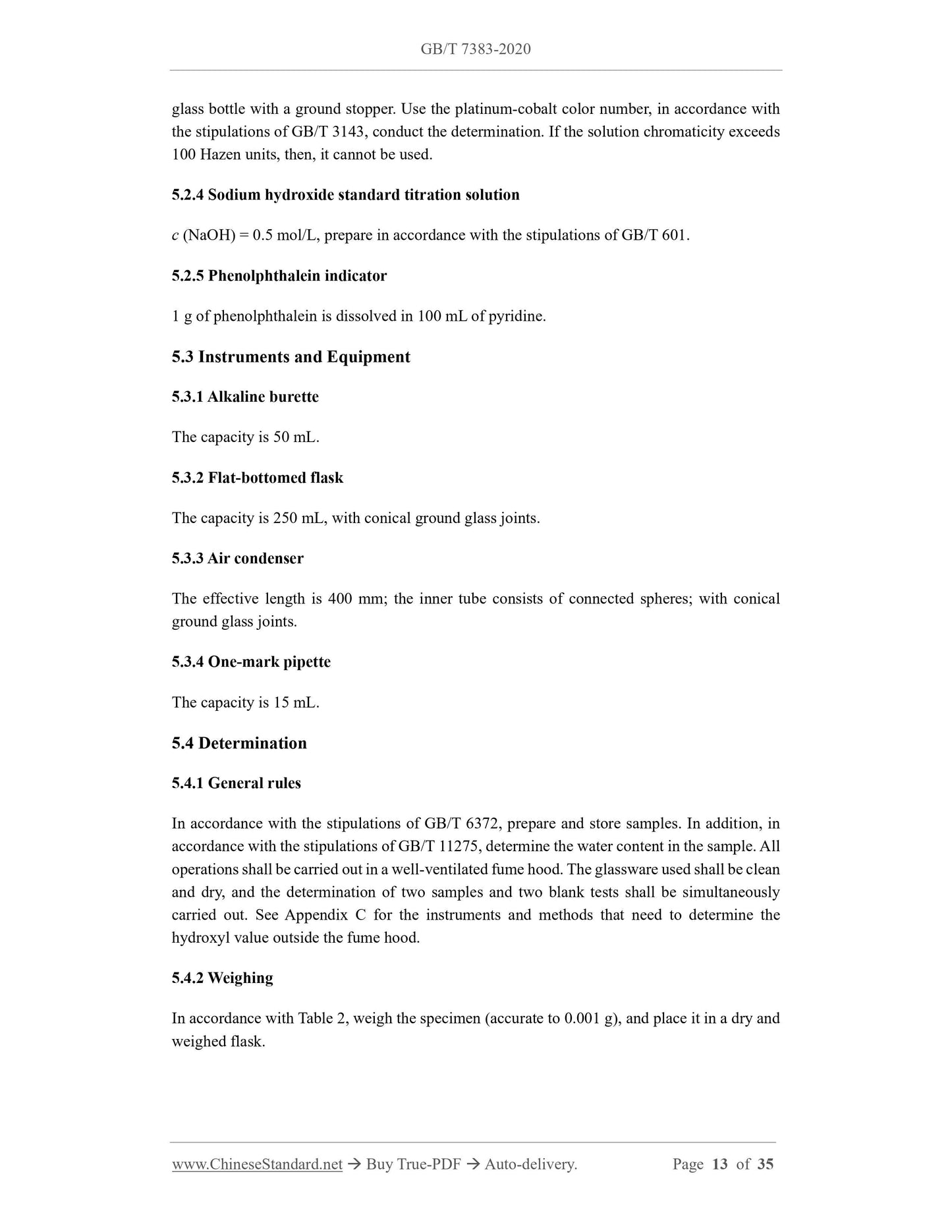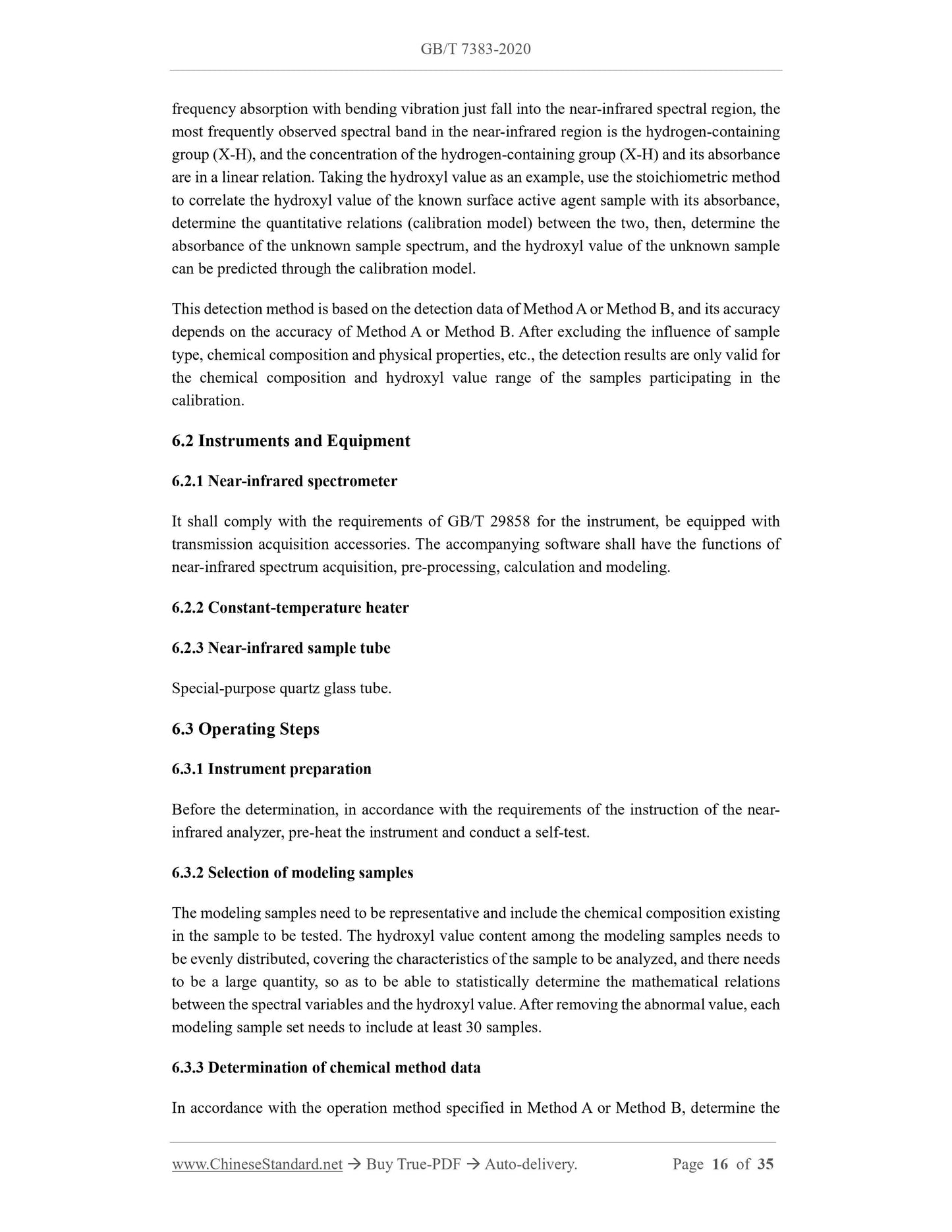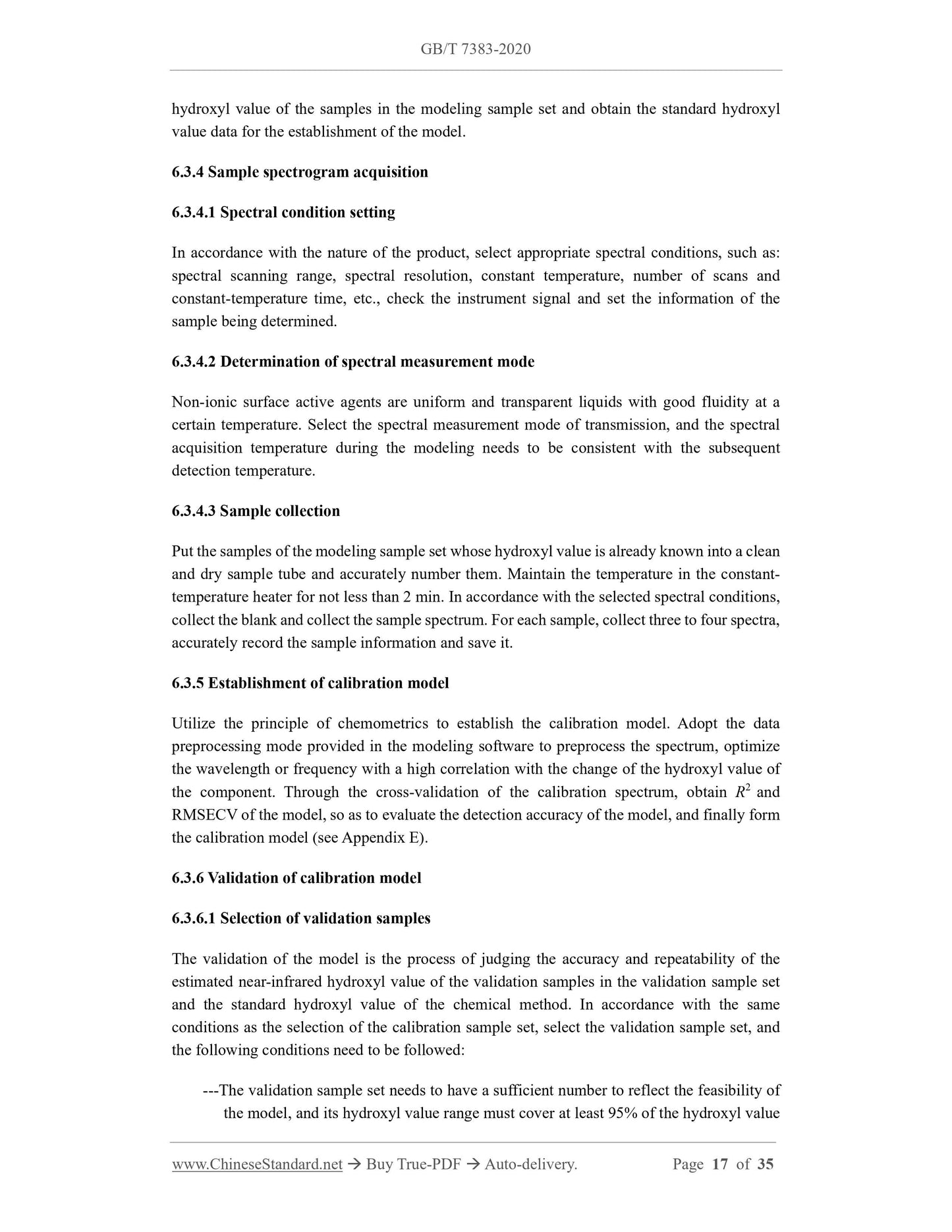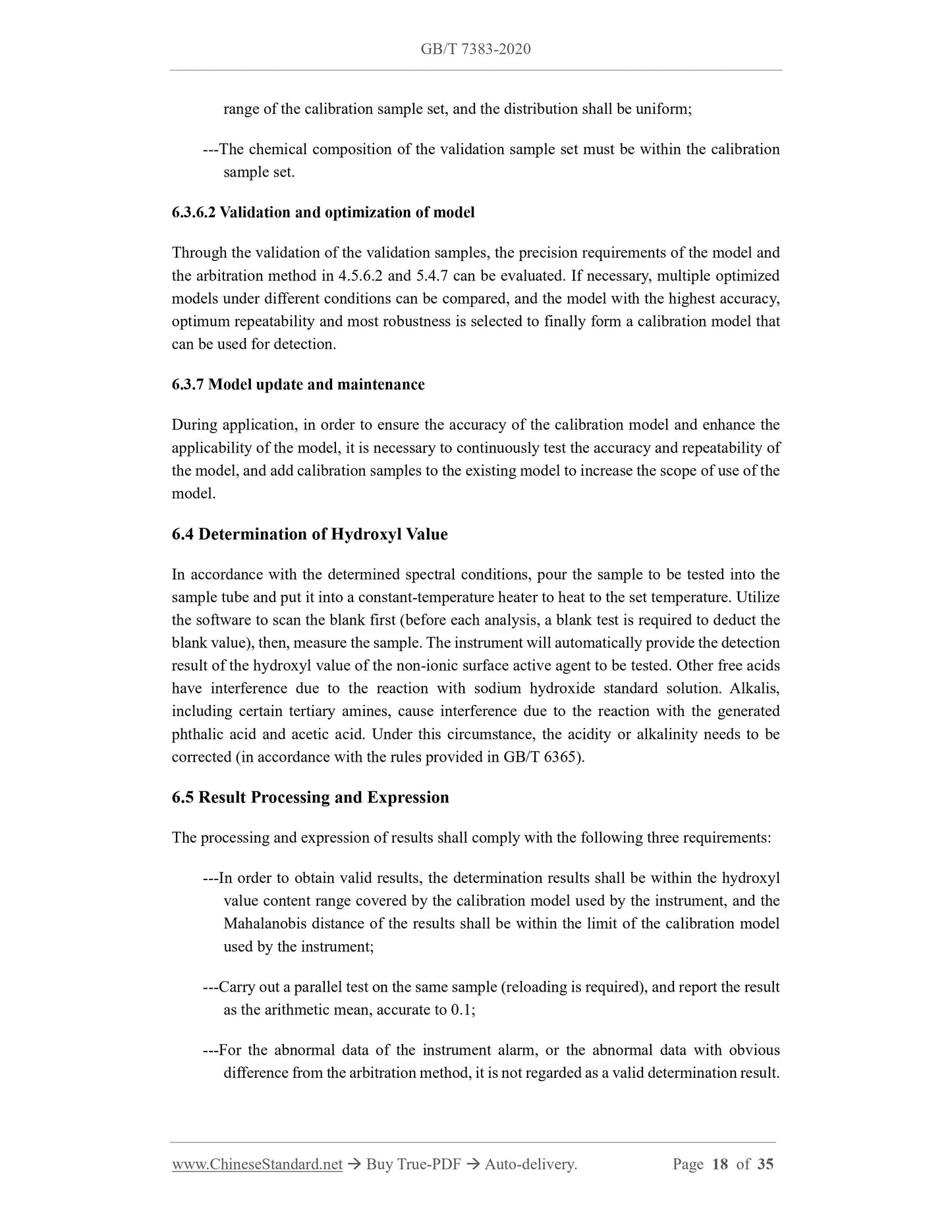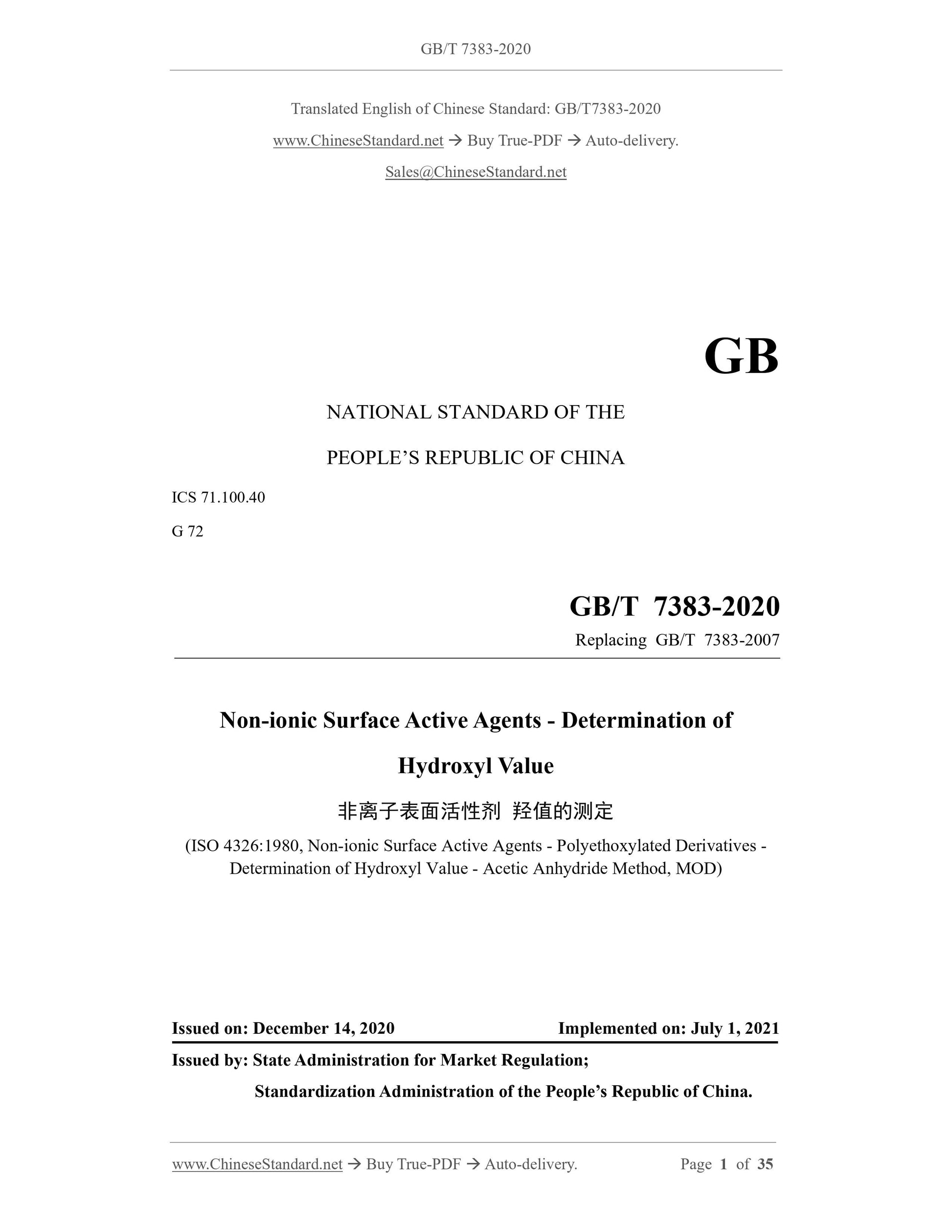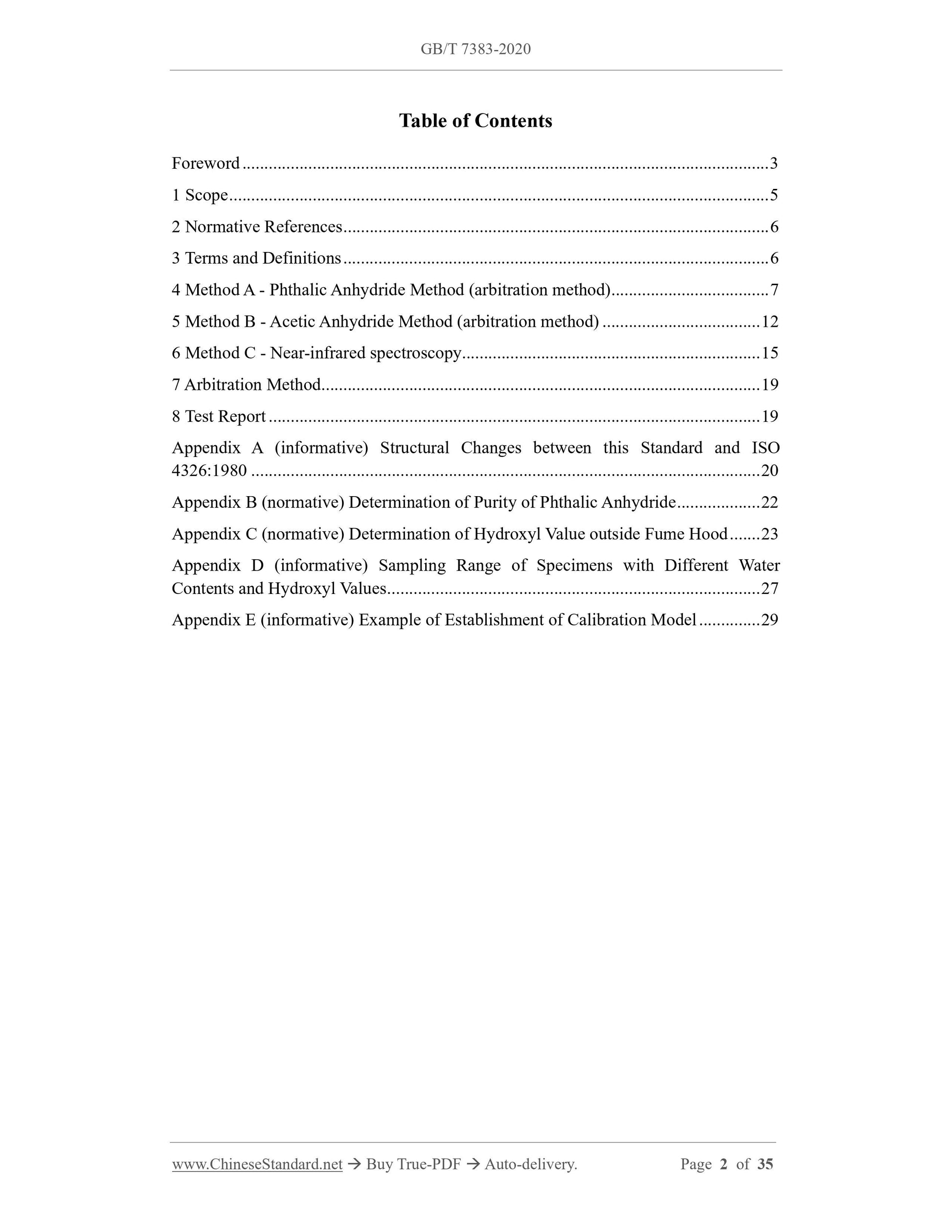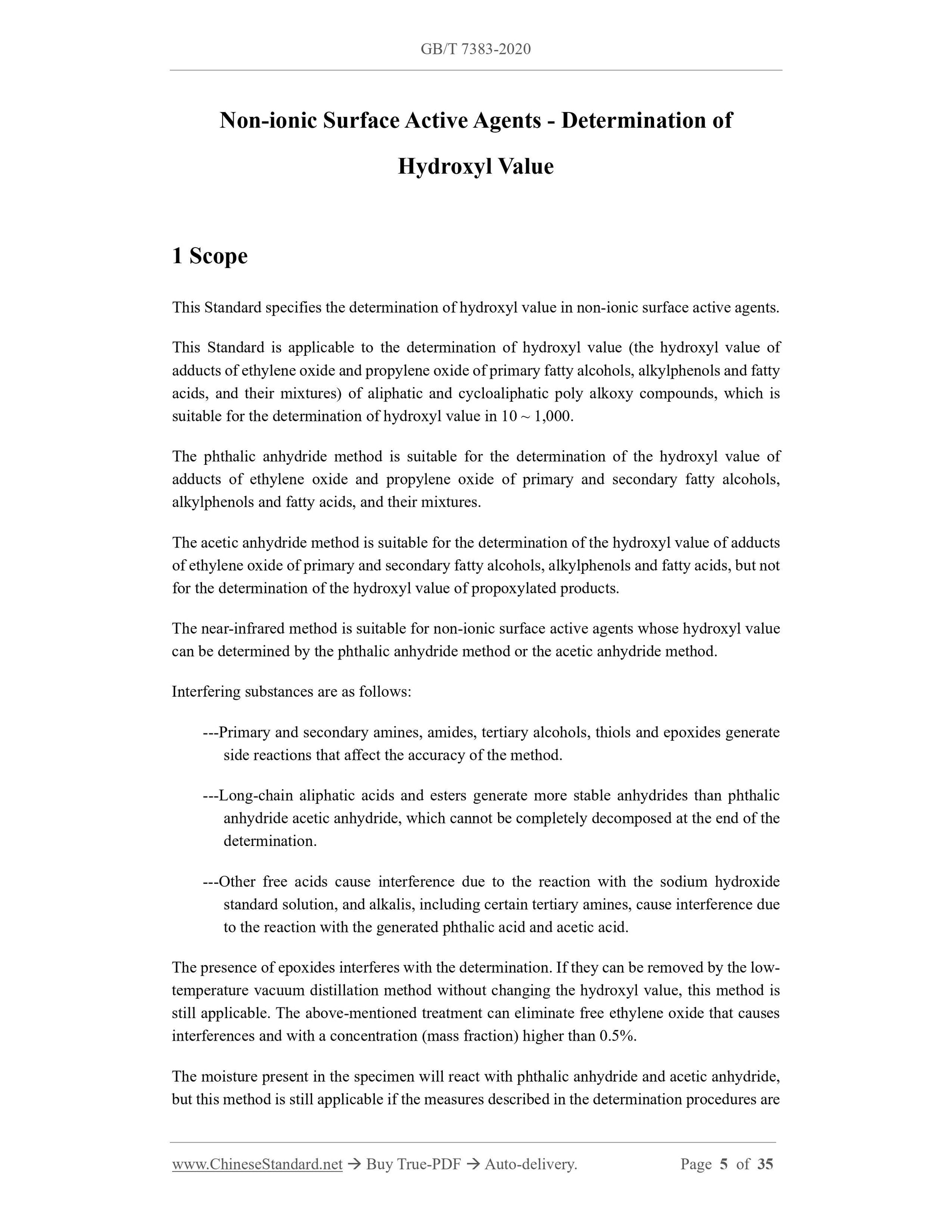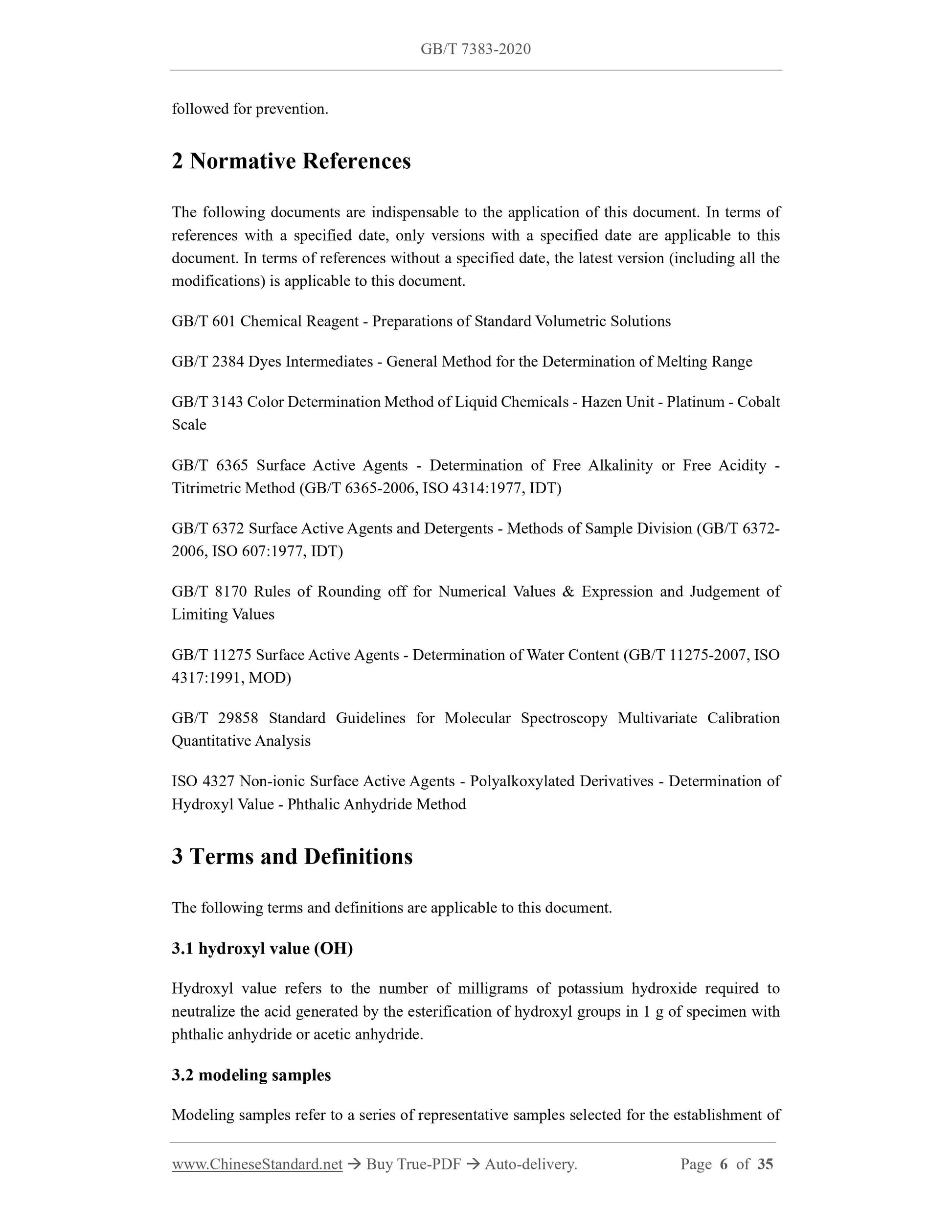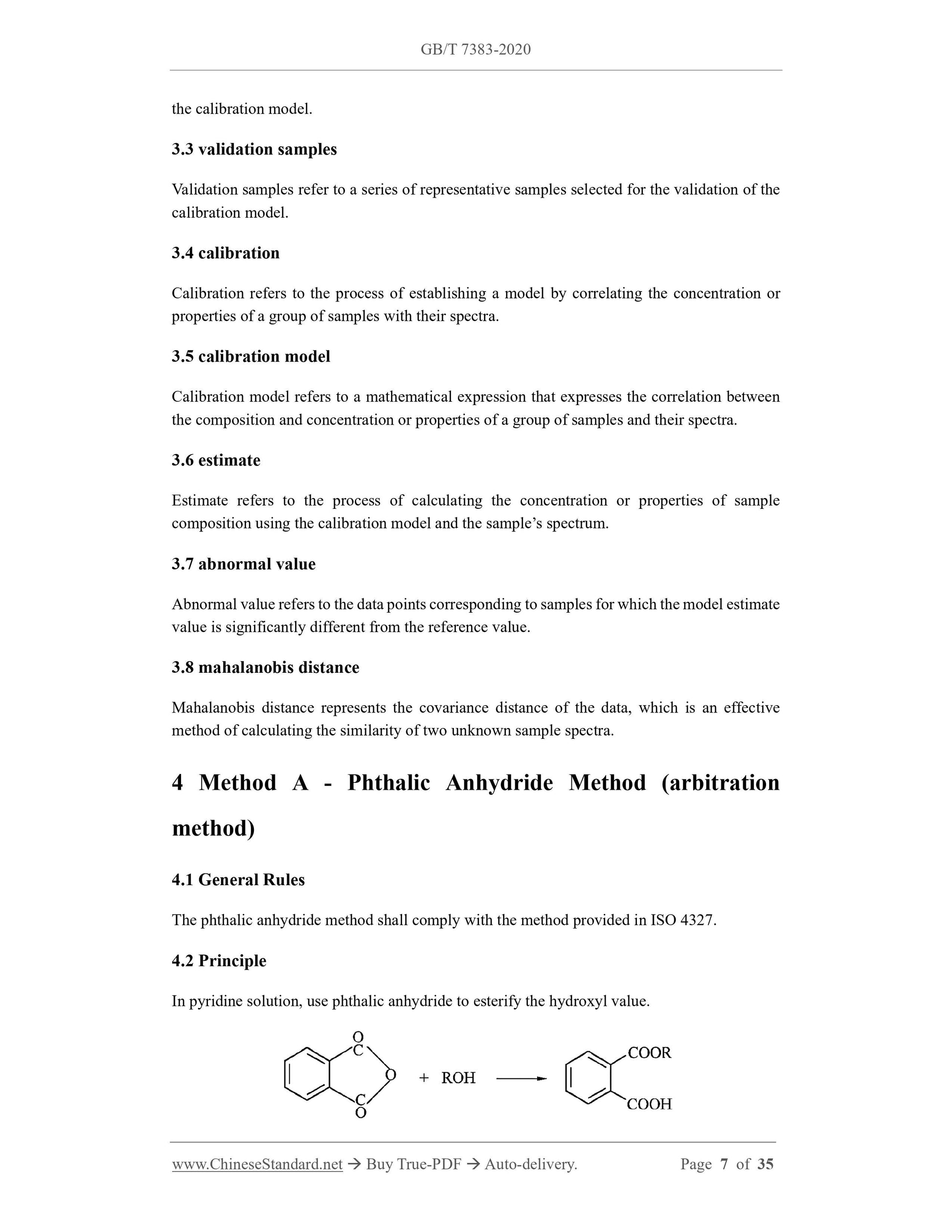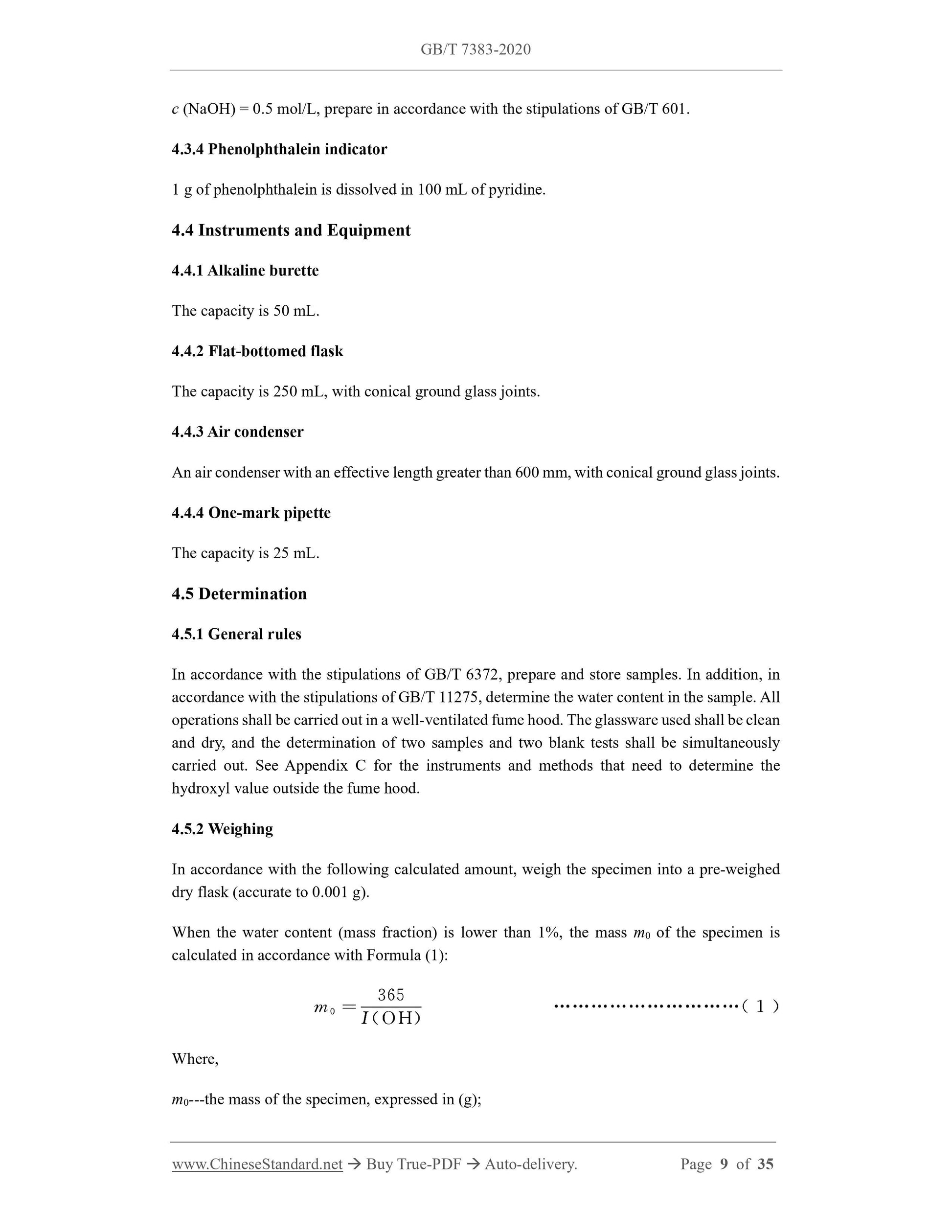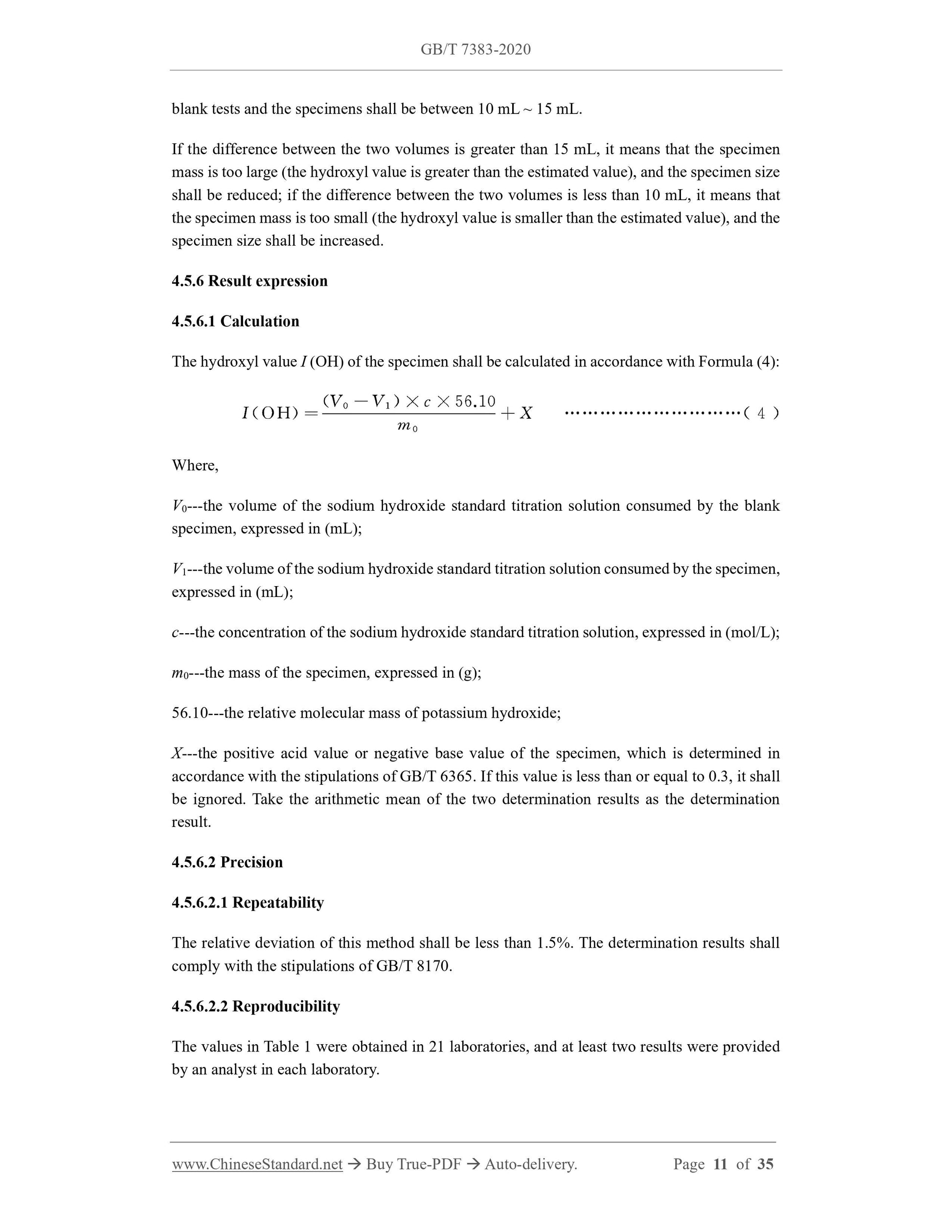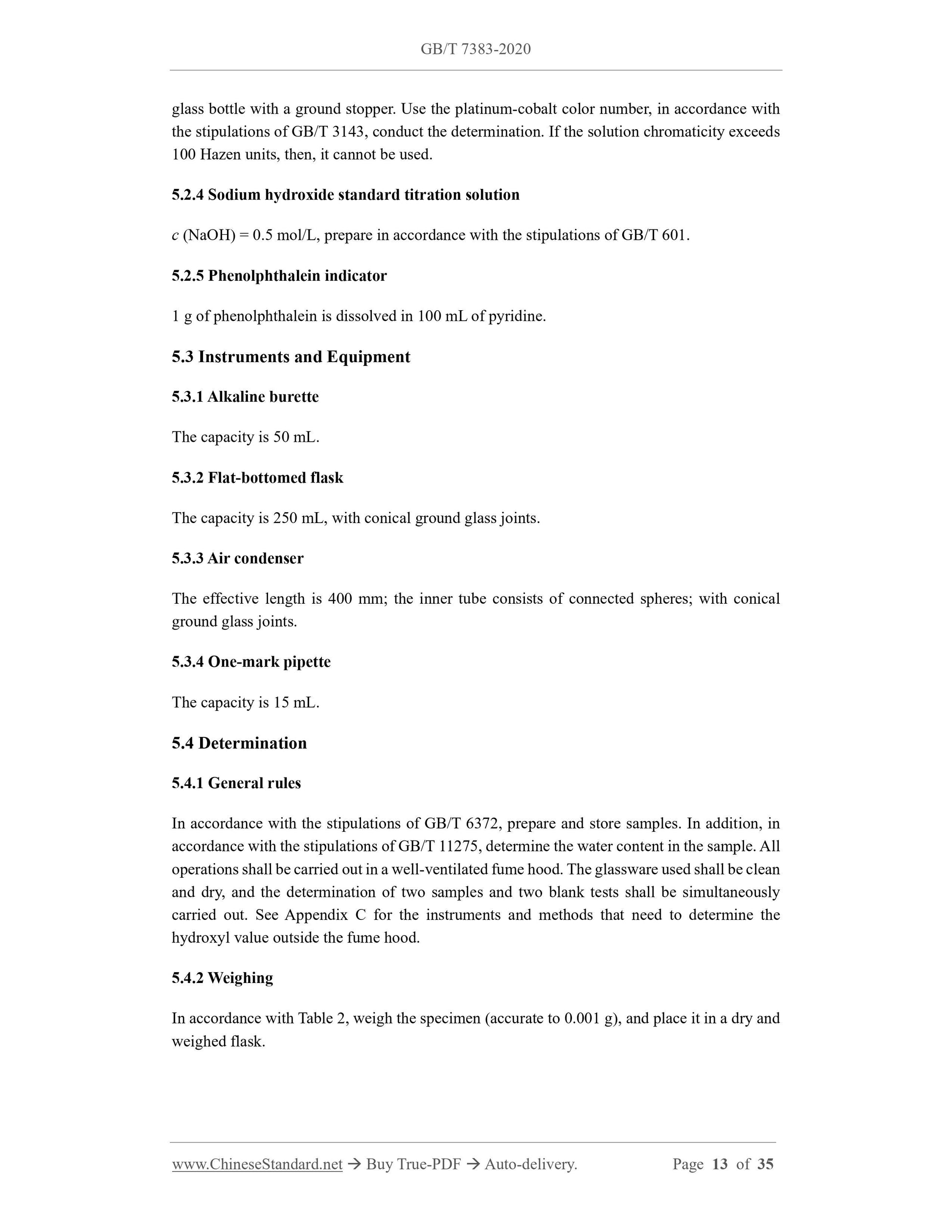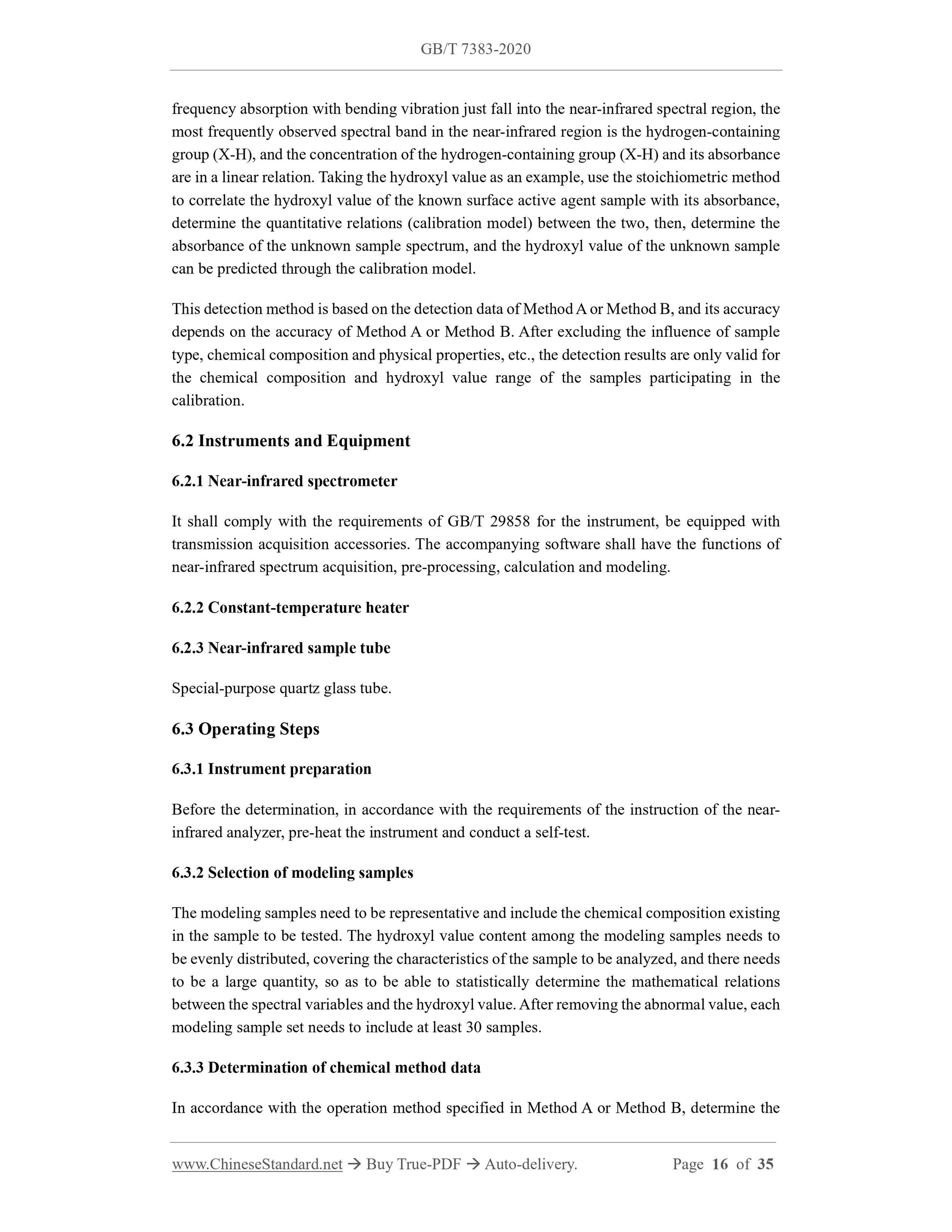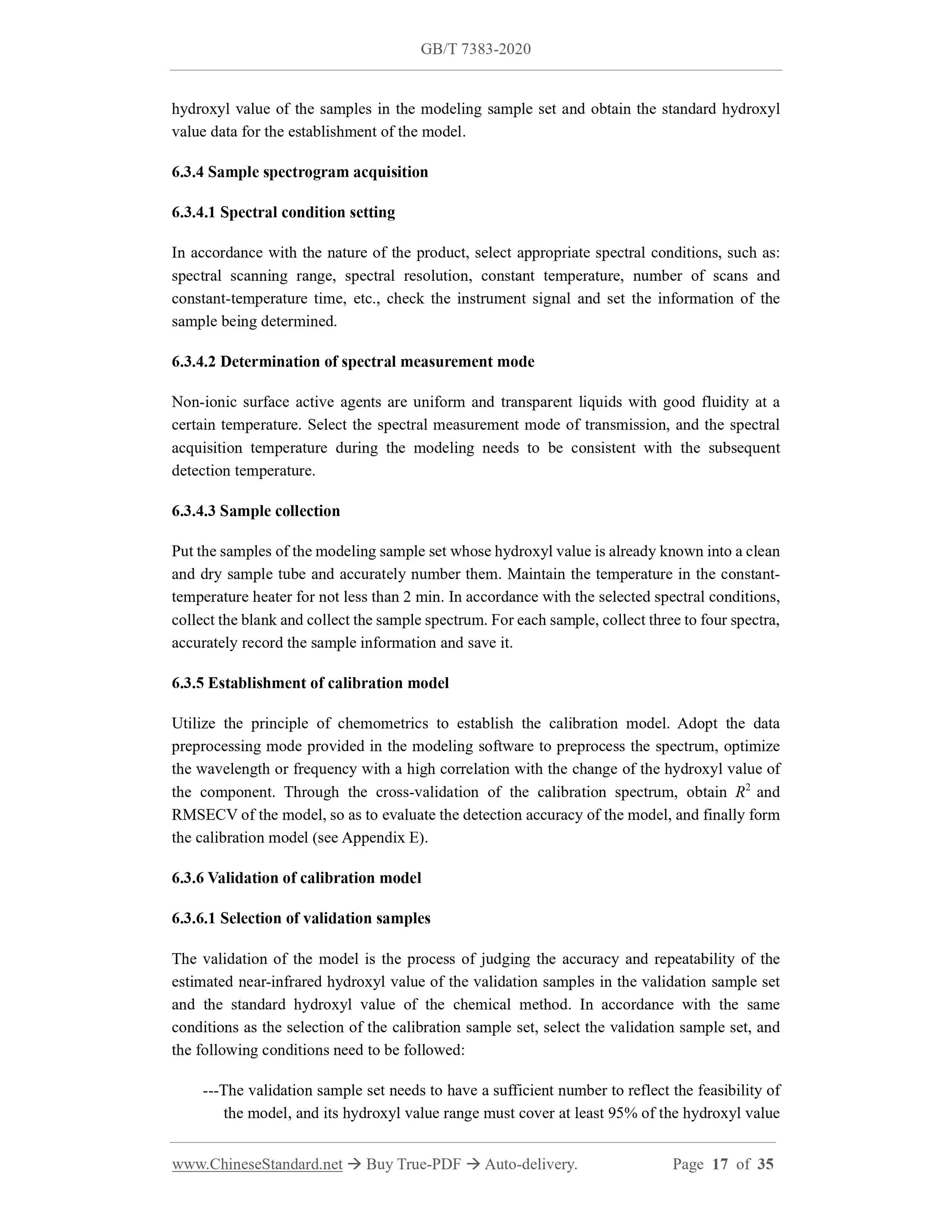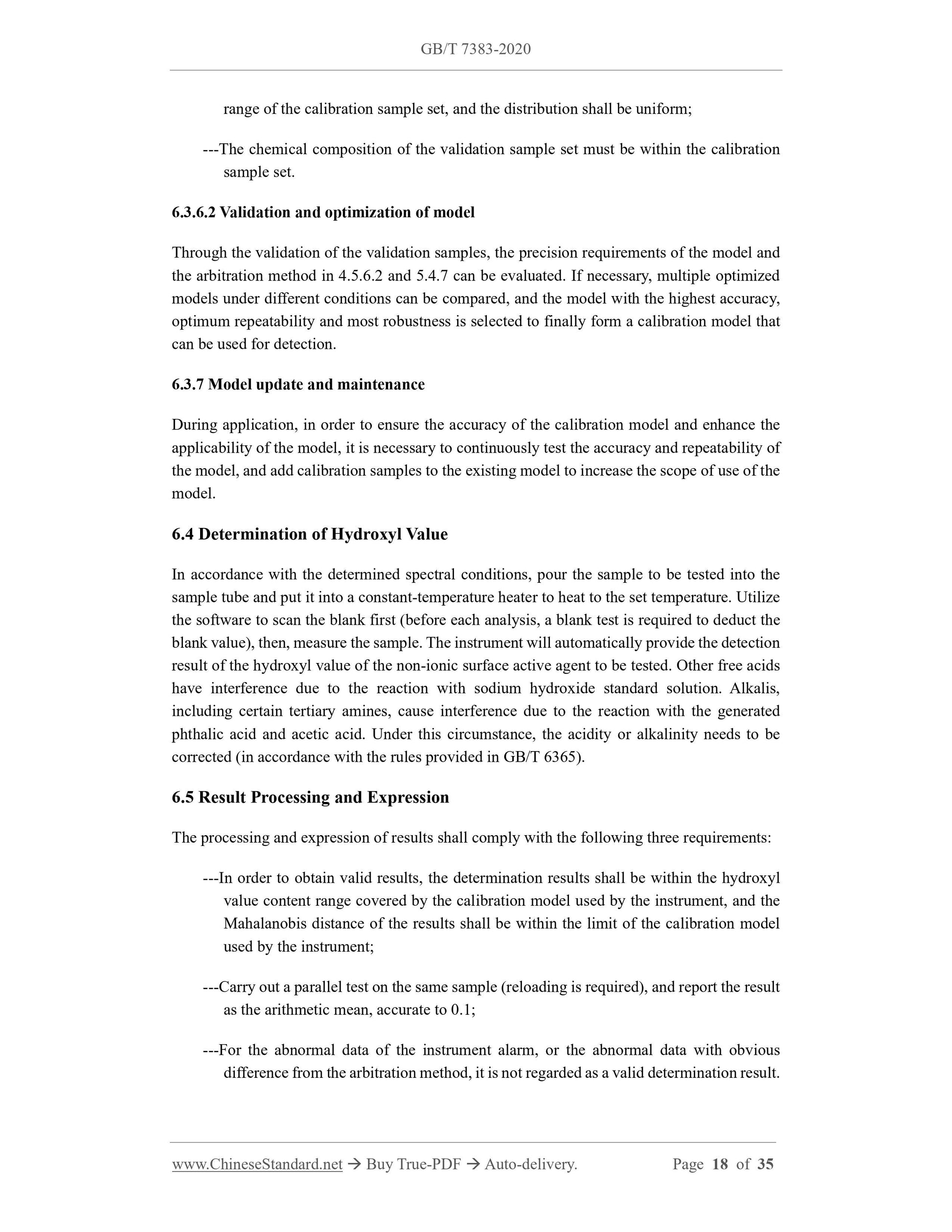1
/
of
11
www.ChineseStandard.us -- Field Test Asia Pte. Ltd.
GB/T 7383-2020 English PDF (GB/T7383-2020)
GB/T 7383-2020 English PDF (GB/T7383-2020)
Regular price
$410.00
Regular price
Sale price
$410.00
Unit price
/
per
Shipping calculated at checkout.
Couldn't load pickup availability
GB/T 7383-2020: Non-ionic surface active agents - Determination of hydroxyl value
Delivery: 9 seconds. Download (and Email) true-PDF + Invoice.Get Quotation: Click GB/T 7383-2020 (Self-service in 1-minute)
Newer / historical versions: GB/T 7383-2020
Preview True-PDF
Scope
This Standard specifies the determination of hydroxyl value in non-ionic surface active agents.This Standard is applicable to the determination of hydroxyl value (the hydroxyl value of
adducts of ethylene oxide and propylene oxide of primary fatty alcohols, alkylphenols and fatty
acids, and their mixtures) of aliphatic and cycloaliphatic poly alkoxy compounds, which is
suitable for the determination of hydroxyl value in 10 ~ 1,000.
The phthalic anhydride method is suitable for the determination of the hydroxyl value of
adducts of ethylene oxide and propylene oxide of primary and secondary fatty alcohols,
alkylphenols and fatty acids, and their mixtures.
The acetic anhydride method is suitable for the determination of the hydroxyl value of adducts
of ethylene oxide of primary and secondary fatty alcohols, alkylphenols and fatty acids, but not
for the determination of the hydroxyl value of propoxylated products.
The near-infrared method is suitable for non-ionic surface active agents whose hydroxyl value
can be determined by the phthalic anhydride method or the acetic anhydride method.
Interfering substances are as follows:
---Primary and secondary amines, amides, tertiary alcohols, thiols and epoxides generate
side reactions that affect the accuracy of the method.
---Long-chain aliphatic acids and esters generate more stable anhydrides than phthalic
anhydride acetic anhydride, which cannot be completely decomposed at the end of the
determination.
---Other free acids cause interference due to the reaction with the sodium hydroxide
standard solution, and alkalis, including certain tertiary amines, cause interference due
to the reaction with the generated phthalic acid and acetic acid.
The presence of epoxides interferes with the determination. If they can be removed by the low-
temperature vacuum distillation method without changing the hydroxyl value, this method is
still applicable. The above-mentioned treatment can eliminate free ethylene oxide that causes
interferences and with a concentration (mass fraction) higher than 0.5%.
The moisture present in the specimen will react with phthalic anhydride and acetic anhydride,
but this method is still applicable if the measures described in the determination procedures are
followed for prevention.
Basic Data
| Standard ID | GB/T 7383-2020 (GB/T7383-2020) |
| Description (Translated English) | Non-ionic surface active agents - Determination of hydroxyl value |
| Sector / Industry | National Standard (Recommended) |
| Classification of Chinese Standard | G72 |
| Classification of International Standard | 71.100.40 |
| Word Count Estimation | 26,287 |
| Date of Issue | 2020-12-14 |
| Date of Implementation | 2021-07-01 |
| Older Standard (superseded by this standard) | GB/T 7383-2007 |
| Regulation (derived from) | National Standard Announcement No. 28 of 2020 |
| Issuing agency(ies) | State Administration for Market Regulation, China National Standardization Administration |
Share
